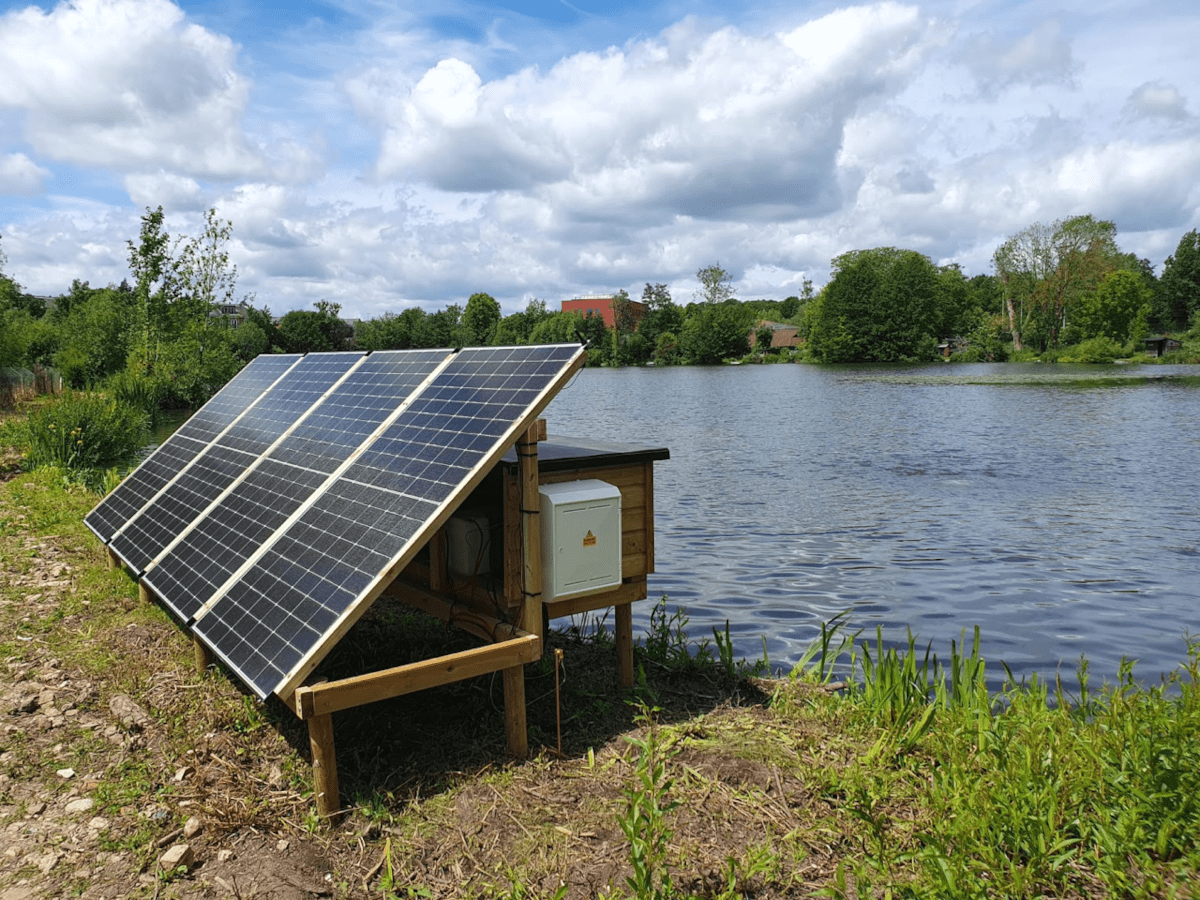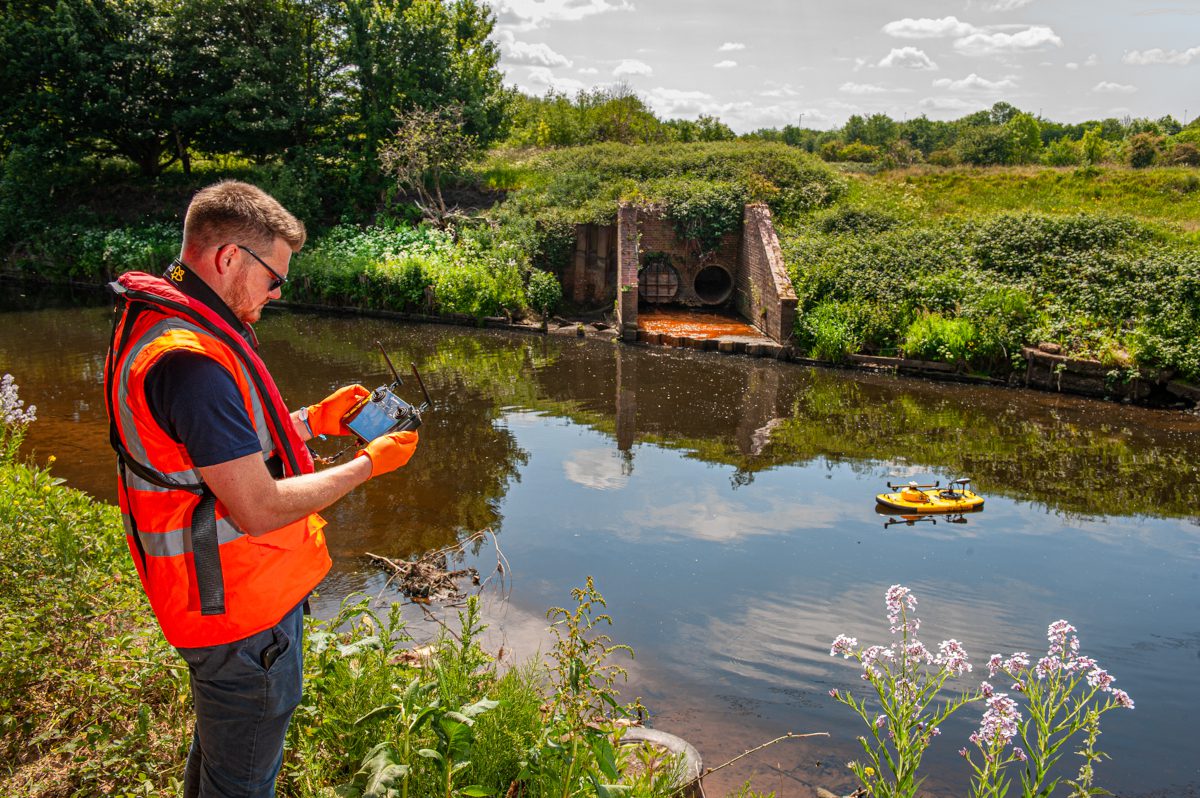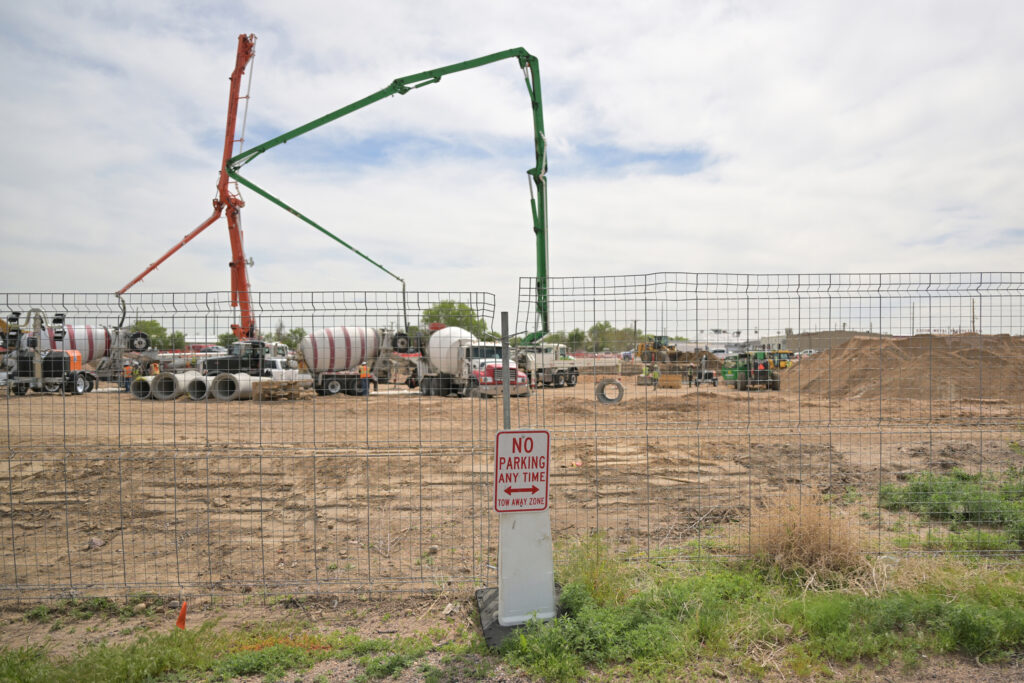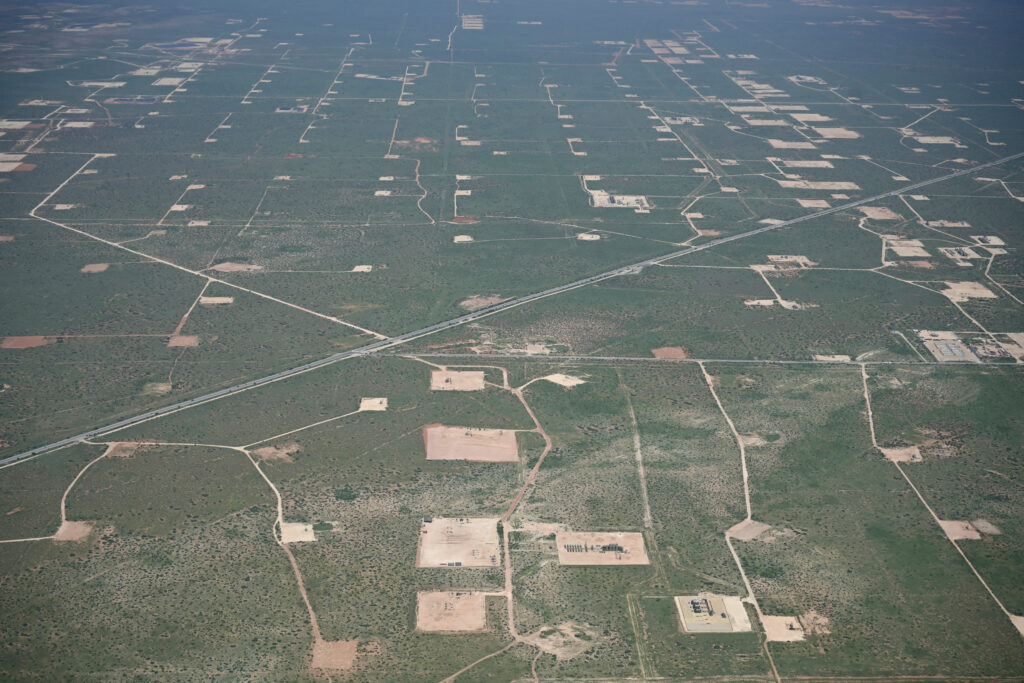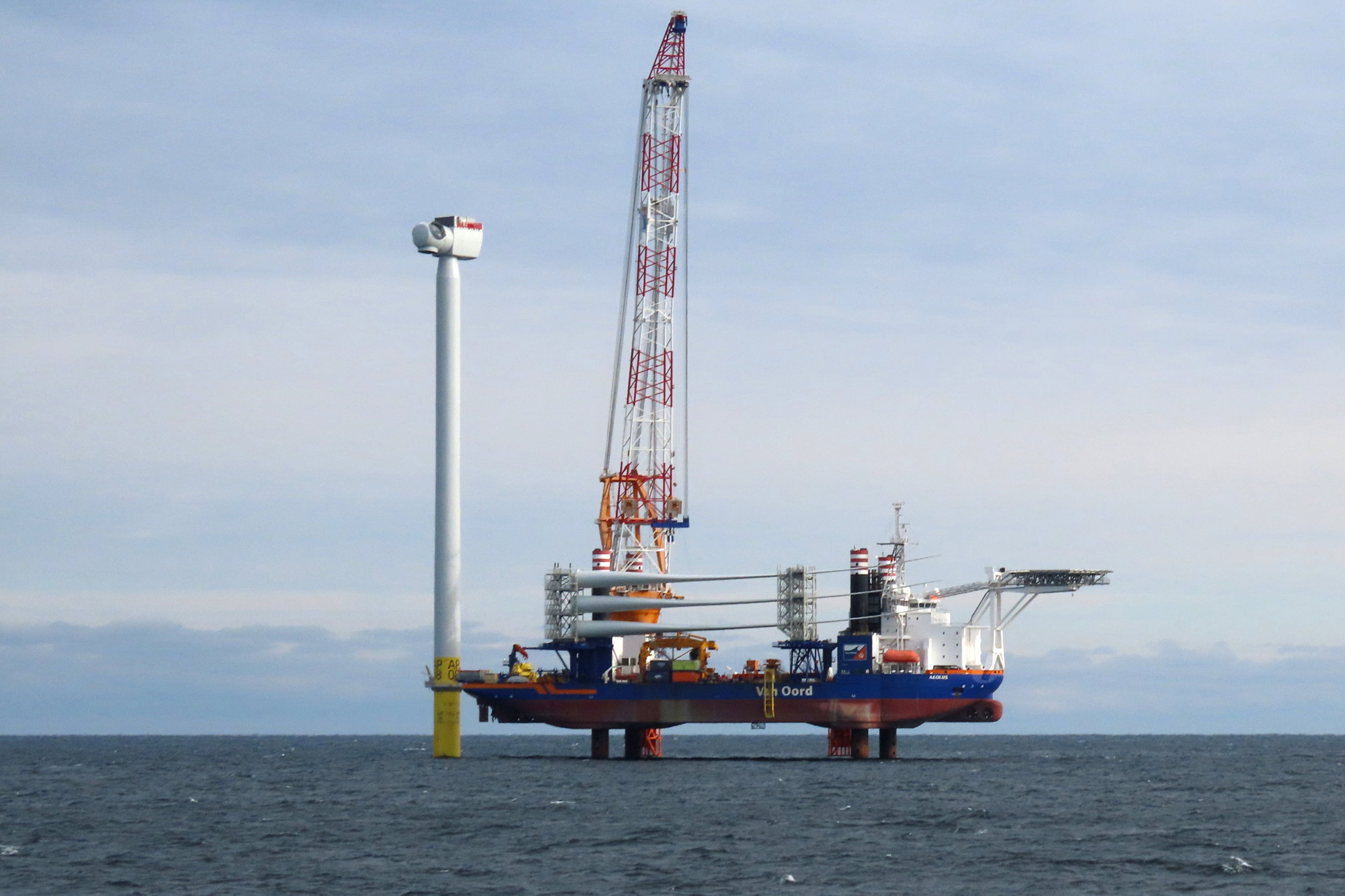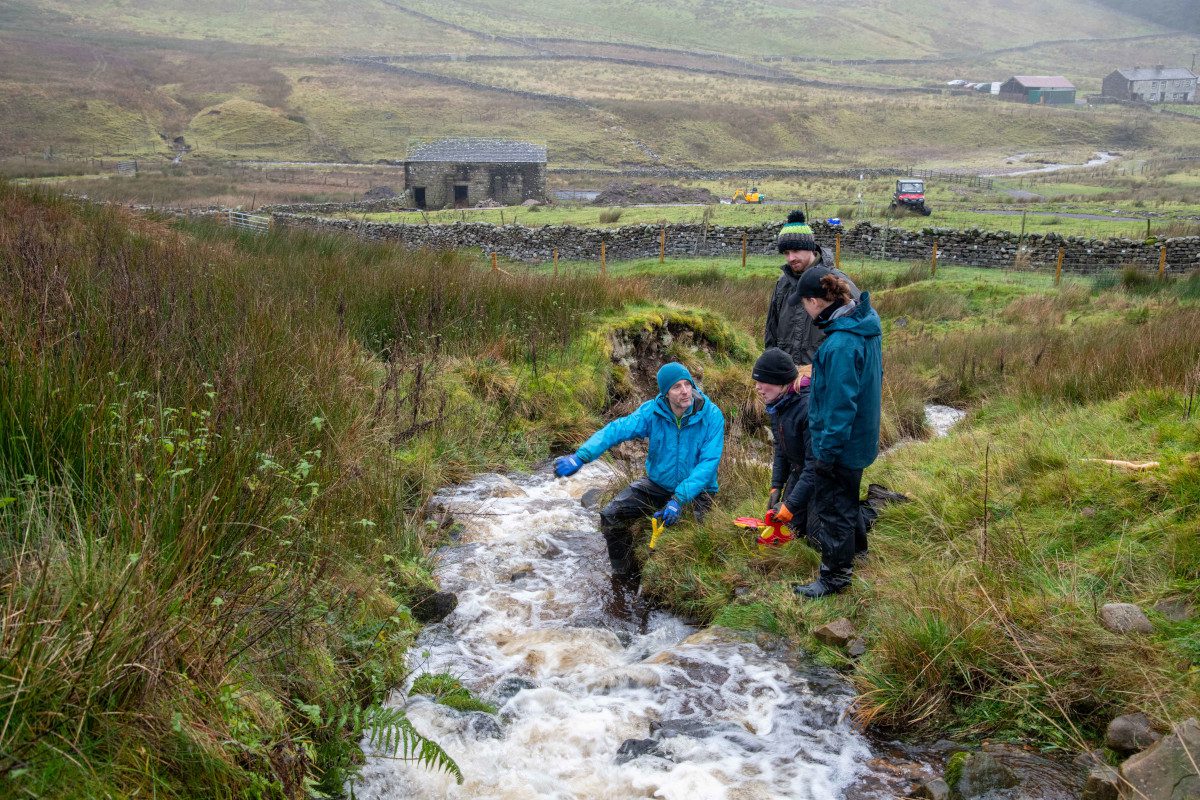
New research will monitor the contribution of new native woodland in England towards mitigating the worst effects of climate change, such as flooding.
Earlier this year, the Woodland Trust started work at Snaizeholme near Hawes, creating one of the largest contiguous new native woodlands in England, while also firing the starting gun on a new programme of scientific research.
Over the course of the next 20 years or more, a team of scientists from the University of York and University of Leeds will brave the site’s relentless rainfall (200cm a year, or the wettest place in Yorkshire) to collect detailed data. They will measure rainfall, soil properties and streamflow and track changes over time. This will help them, among many other things, to understand how the flood mitigation benefits of new woodlands develop as the trees grow.
Already on site, scientists are using specialist equipment such as soil moisture and temperature sensors, weather stations and state of the art “lightning detectors” to measure extreme weather events.
The results of this research have the potential to directly help with efforts to reduce the impacts of climate change by increasing our understanding of how trees can reduce flooding risk, capture and store carbon, and provide vital habitat for nature recovery.
Dr. John Crawford, Conservation Evidence Officer for the Woodland Trust, said: “We know mature woodlands deliver a range of important benefits: they provide a home for nature, lock away carbon to fight climate change, and slow the flow of water helping to reduce downstream flooding. Less is known about new woodlands. Working together with world-leading researchers will allow us to take detailed measurements of how biodiversity and ecosystem functions change as the trees grow and the woodlands mature. The research has the power to be a game changer when it comes to how such a new site can combat the extreme effects of climate change. ”
Professor Dominick Spracklen from the University of Leeds, said: “Restoring habitats across a whole valley has the potential to deliver big benefits for people, nature and climate. We have used a computer model to calculate that restoring the valley would reduce downstream flooding during a 1-in-50-year storm event by nearly 10%. To check that our predictions are correct , we are now installing special equipment to monitor soil and vegetation properties, rainfall and river flow. This will allow us to understand how the flood reduction benefits of the project grow as the native woodlands mature.”
Another key focus will be researching how establishing new trees alters the properties of soil.
Francesca Darvill, Sowerby PhD Researcher at the University of Leeds, said: “We still know relatively little about how soil carbon changes after tree planting. Most previous studies lack information about how much soil carbon was present before trees were planted, making it difficult to know how soil carbon has changed. At Snaizeholme, we are making detailed measurements of the variability of soil properties across the site before the trees are planted. In years to come this will allow us to better understand how the trees have altered the soils. Crucially it will provide better information on how much carbon new woodland soils help to lock up.”
Dr Rob Mills at the University of York, said: “Opportunities to create and restore habitats at this scale are rare in England. Snaizeholme provides a unique opportunity to understand how carefully restoring a rich mosaic of habitats provides a range of benefits for people, nature and climate. We know intact woodlands can be richly biodiverse ecosystems, and exploring how soil biodiversity, and the activity of soil microbes changes over time will be an important part of our work at Snaizeholme as the woodland develops’.”
Many centuries ago, the glacial valley at Snaizeholme would have been blessed with swathes of woodland stretching across the landscape but now the 561 hectares (1387 acres) site is almost devoid of trees. It’s a stark situation repeated across the Yorkshire Dales National Park, where total tree cover is less than 5% and ancient woodlands only make up 1% of that cover.
The Woodland Trust is planning to plant almost 291 hectares (719 acres) with native tree saplings. The careful approach to planting will see different densities of trees planted across the site to create groves, glades and open woodlands that gently transition into and connect with the other habitats, all delivered without the use plastic tree guards or herbicides.
It’s a unique and complex piece of conservation work due to the range of habitats and species, the topography and elevation – not to mention the estimated 2m of rainfall per year. Tree planting will exist alongside huge restoration projects, including 113 hectares (279 acres) of blanket bog / deep peat, approximately 100 ha (247 acres) of limestone pavement and over 77.4 hectares (191 acres) of open valley bottom following Snaizeholme Beck.
Phase one of woodland creation at Snaizeholme has been funded by the White Rose Forest through its Trees for Climate funding programme. Trees for Climate, part of Defra’s Nature for Climate fund, provides grants for woodland creation within all Community Forest areas in England. Researchers at the University of Leeds are supported by the Peter Sowerby Foundation. The project at Snaizeholme is supported by Woodland Trust’s partners Aviva, B&Q, Screwfix, Bettys & Taylors of Harrogate.




